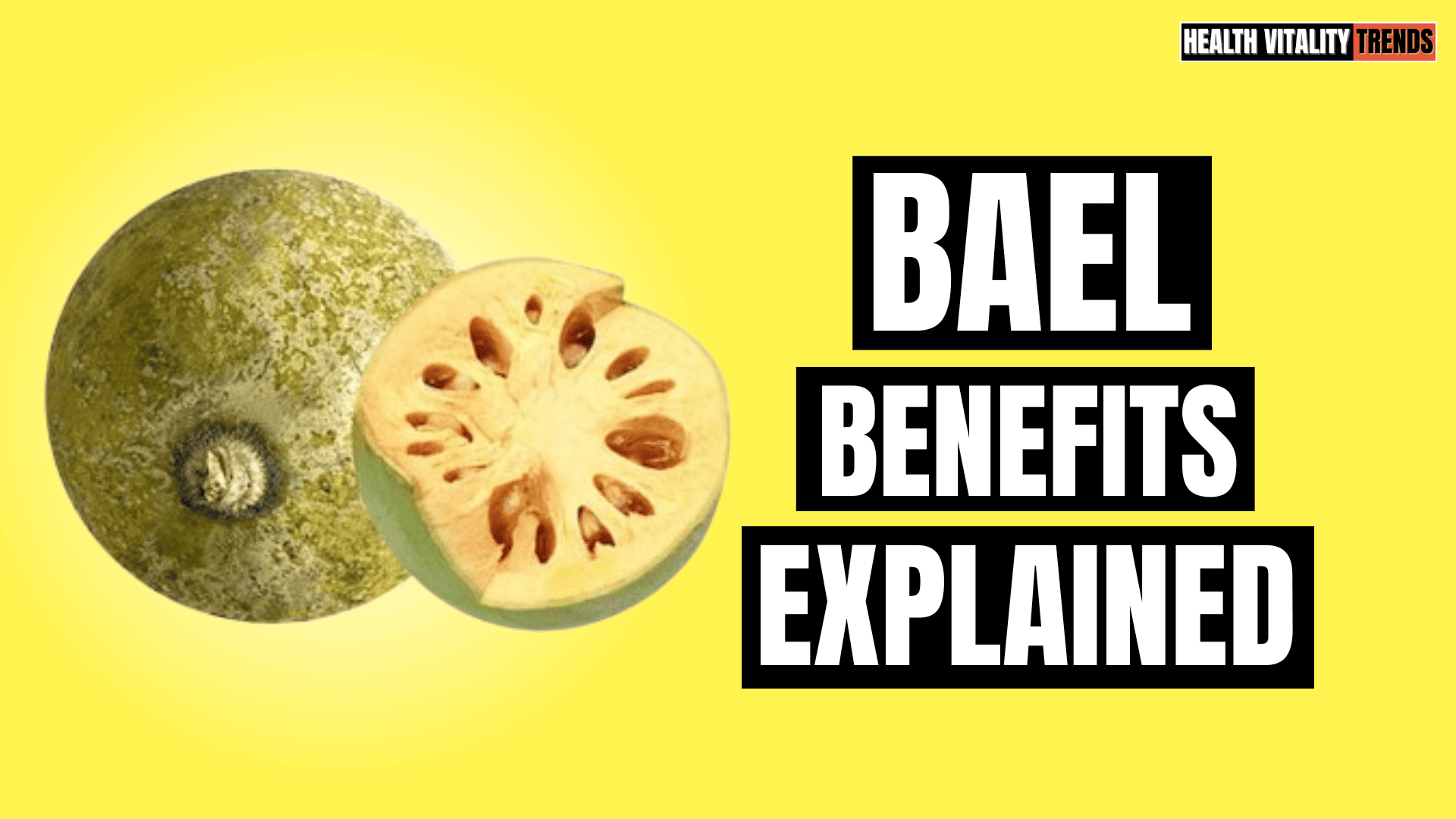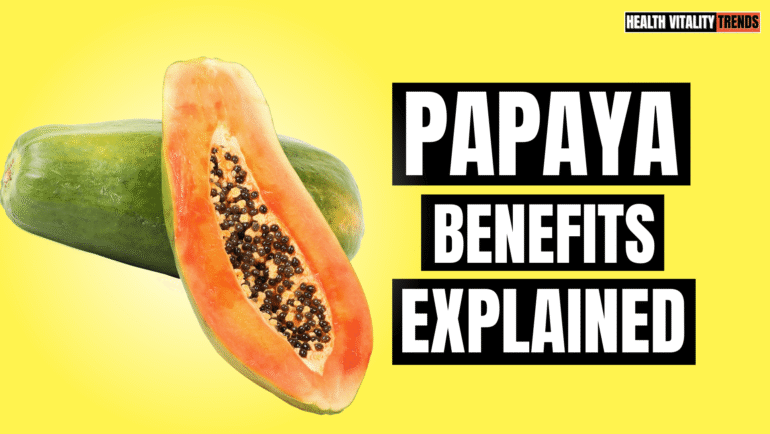
BAEL (Wood Apple): Rare Indian Fruit with Gut Healing & Antioxidant Power
Bael, also known as Wood Apple, is a unique fruit treasured in South and Southeast Asia for both its flavor and medicinal value.
With its hard shell and aromatic pulp, bael stands out not just as a food but as a traditional remedy used for centuries.
Packed with fiber, vitamins, and antioxidants, this fruit is particularly famous for supporting digestion and cooling the body during scorching summers.
What is Bael (Wood Apple)?
Bael (Aegle marmelos)[1], often called Wood Apple due to its tough outer shell, is native to India and widely grown in Sri Lanka, Nepal, Bangladesh, and Thailand.
The fruit ripens mainly in the summer months (April–June), offering much-needed relief from heat-related issues.
A fascinating cultural fact: In Hindu tradition, the bael tree is sacred to Lord Shiva, and its trifoliate leaves are offered in prayers. Bael drinks, such as bael sharbat, are also a staple in Indian households during summer to prevent heatstroke.
Its use in Ayurveda dates back thousands of years, where it’s prescribed for digestive ailments, respiratory issues, and as a natural coolant.

What Does Bael Taste Like?
Bael’s taste is unlike any common supermarket fruit. The pulp is aromatic, with a sweet, slightly tangy flavor that resembles a mix of tamarind and banana. Its texture is thick and sticky, often requiring soaking or blending before consumption.
Some describe the taste as “earthy caramel with citrus undertones.” When ripened fully, bael develops a pleasant fragrance that fills the room once the shell is cracked open.
Bael (Wood Apple) Nutrition Facts
Here’s the nutritional breakdown[2] for 100 grams of raw bael pulp (approx. ½ cup):
| Nutrient | Amount per 100g |
|---|---|
| Calories | 88 kcal |
| Carbohydrates | 32 g |
| Fiber | 2.9 g |
| Protein | 1.8 g |
| Fat | 2.9 g |
| Vitamin C | 68.7mg |
| Vitamin A | 56mcg |
| Riboflavin | 1.19 mg |
Key nutrients to note:
- Vitamin C: Acts as a strong antioxidant, boosting immunity and protecting cells from oxidative damage.
- Fiber: Supports smooth digestion, prevents constipation, and promotes gut health.
Health Benefits of Bael Fruit
1. Supports Digestive Health: Bael is traditionally used to relieve constipation and diarrhea. Its soluble fiber regulates bowel movement, while tannins in the pulp help reduce inflammation in the gut.[3]
2. Boosts Immunity: With high vitamin C and phytochemicals, bael strengthens the immune system and reduces oxidative stress.[3]
3. Promotes Heart Health: Research suggests that bael may help lower cholesterol and triglycerides, reducing cardiovascular risk factors.[3]
4. Helps Manage Blood Sugar: Animal studies indicate bael leaf extracts may lower blood glucose levels by improving insulin sensitivity, though more human trials are needed.[3]
5. Protects Against Heat Stress: Bael sharbat is a popular summer drink in India because it cools the body and replenishes electrolytes, preventing dehydration and heatstroke.[3]
6. Anti-Inflammatory Properties: Flavonoids and phenolic compounds in bael reduce inflammation, which may benefit conditions like arthritis.[3]
How to Eat Bael Fruit
The shell of the Bael is hard, so you’ll need a hammer and chisel to crack it open. Once you have cracked open the fruit, the pulp can be scooped out using a spoon and used in different ways:
- Bael Sharbat: Soak the pulp in water, strain it, and mix with honey or jaggery for a refreshing summer drink.
- Bael Chutney: Blend the pulp with spices, salt, and tamarind for a tangy side dish.
- Bael Smoothie: Mix pulp with yogurt, dates, and banana for a fiber-rich breakfast option.
Nutritionist’s tip: Always strain the pulp before use to remove seeds and fibrous strands for a smoother texture.

How to Store Gooseberries to Keep Them Fresh
- Whole fruit: Store unripe bael at room temperature. Once ripe, it can last up to 2 weeks if kept in a cool, dry place.
- Refrigerated pulp: After scooping out the pulp, store in an airtight container in the fridge for up to 5 days.
- Frozen: Pulp can be frozen for 2–3 months and later used in drinks or desserts.
- Powder form: Dried bael powder is shelf-stable and can be stored for several months.
Pro tip: If you’re storing pulp, sprinkle a few drops of lemon juice to preserve its color and vitamin C content.
Possible Side Effects or Precautions
Side Effects
- Digestive issues: Overconsumption can cause bloating or constipation due to its tannin content.
- Hypoglycemia: Excess use alongside diabetes medication may lower blood sugar too much.
- Allergic reactions: Rare, but some may experience skin rashes or sensitivity.
- Interaction with supplements: High antioxidant content may interfere with iron absorption if taken in excess.
Precautions
- Pregnant women should avoid excess bael, as traditional medicine sometimes uses it for uterine stimulation.
- Diabetics should monitor their blood sugar closely when consuming bael regularly.
- People on medication for blood pressure or cholesterol should consult a doctor, as bael may enhance the effect of drugs.
- Start with small amounts if consuming bael for the first time to check for tolerance.
Fruits Similar to Gooseberry
- Tamarind: Similar tangy sweetness, often used in chutneys and drinks.
- Papaya: Soft pulp, rich in fiber and digestive enzymes.
- Custard Apple (Sitaphal): Sweet, creamy texture but milder in flavor.
- Mango: Tropical sweetness with more sugar but less fiber.
Common FAQs About Gooseberry
1. Is bael good for weight loss?
Yes. It’s high fiber keeps you full longer, reducing unhealthy snacking. Bael drinks also make for a low-fat, refreshing alternative to sugary beverages.
2. Can diabetics eat bael?
Yes, in moderation. Some studies suggest bael may help regulate blood sugar, but it should not replace prescribed medication.
3. What is the best way to pick a ripe bael?
Choose fruits with a hard shell that gives off a mild, sweet aroma. A ripe bael often develops hairline cracks on the surface.
4. Can bael be eaten daily?
Yes, but moderation is key. A small serving (½ cup pulp) a few times a week is generally safe for most healthy adults.
Conclusion
Bael (Wood Apple) is more than just a fruit. It’s a blend of tradition, nutrition, and natural healing. Rich in vitamin C, fiber, and antioxidants, it supports digestion, immunity, and heart health while offering cooling relief during hot weather.
Whether you enjoy it as a refreshing sharbat or a tangy chutney, adding bael to your diet is a delicious way to boost your wellness naturally. Try cracking one open and experience this ancient superfruit for yourself.
Want to explore more? Visit our complete guide on Fruits. – Here








